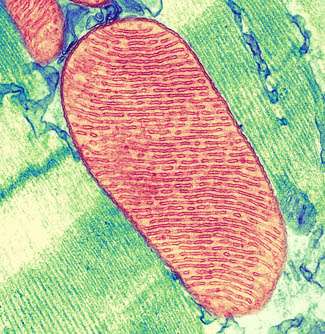Enzyme restores function with diabetic kidney disease

Researchers at the University of California, San Diego School of Medicine say that, while a prevailing theory suggests elevated cellular levels of glucose ultimately result in diabetic kidney disease, the truth may, in fact, be quite the opposite. The findings could fundamentally change understanding of how diabetes-related diseases develop – and how they might be better treated.
Writing in the October 25 issue of Journal of Clinical Investigation, Kumar Sharma, MD, professor of medicine and director of the Center for Renal Translational Medicine (CRTM) at UC San Diego, Laura Dugan, MD, professor of medicine and Larry L. Hillblom Chair in geriatric medicine, Young You, PhD (CRTM), Robert Naviaux, MD, PhD, professor of medicine, and colleagues describe first-ever studies of real-time superoxide production in the kidneys of live mice with type 1 diabetes.
Current theory posits that impaired diabetic kidney function in humans as well as in mice is the result of chronically high glucose (sugar) levels which prompt energy-generating mitochondria in cells to produce an overabundance of superoxide anion - a highly reactive, toxic molecule that ultimately leads to downstream cellular damage, organ dysfunction and disease.
But Sharma, who also works for the Veterans Administration San Diego Healthcare System, and colleagues upend this theory. Rather than detecting higher-than-normal levels of superoxide in the damaged kidneys of the diabetic mice, the researchers discovered reduced superoxide production and suppressed mitochondrial activity. When they stimulated the mitochondria by activating a key energy-sensing enzyme called AMPK, superoxide production increased but evidence of diabetic kidney disease markedly declined.
"Mitochondrial superoxide does not seem to be a causative factor of diabetic kidney disease," said Sharma. "Indeed, when mitochondrial superoxide is increased with AMPK activation, there is reduced kidney disease, suggesting that improving mitochondrial function and superoxide production is actually beneficial for diabetic complications. This idea is a sea change in the field of diabetic complications."
Sharma said the problematic reduction in AMPK activity is likely due to "caloric excess," which creates cellular imbalances associated with inflammation and fibrosis.
Boosting beneficial AMPK activity may be achieved through simple lifestyle changes, such as weight loss and exercise, Sharma noted. There is also considerable on-going research into the development of new agonist drugs that mimic or activate AMPK.
"In addition, methods will need to be developed to monitor mitochondrial function in animal models and in clinical trials," said Sharma. "The study of metabolites may be of great value to monitor mitochondrial non-invasively. Other methods, such as novel imaging tools like the one described in our paper, will also be important to follow mitochondrial superoxide production. It's interesting to note that recent studies by other groups have suggested that stimulating mitochondrial superoxide production may actually increase longevity and contribute to the benefits of exercise."
More information: AMPK dysregulation promotes diabetes-related reduction of superoxide and mitochondrial function, J Clin Invest. doi:10.1172/JCI66218















